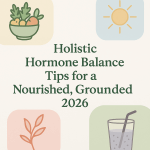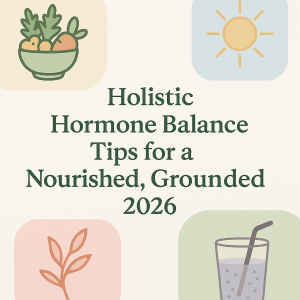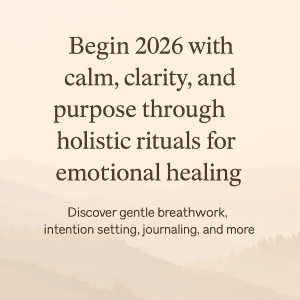We live in a fast-paced world, where demands often exceed our capacity to cope. From juggling work responsibilities to managing family life and navigating personal challenges, stress seems inevitable.
But is it?
What if there were simple, holistic techniques to keep stress in check, allowing us to live more mindfully and peacefully?
In this blog, we’ll explore powerful stress management techniques like mindfulness and relaxation to help you reclaim balance in your life.
Stress Less, Live More
Stress is a natural response of the body to challenges or perceived threats. While a little bit of stress can sometimes be beneficial—keeping us alert and motivated—chronic stress has a serious impact on our health.
It can manifest physically as headaches, muscle tension, and fatigue, and emotionally as irritability, anxiety, or even depression. Over time, unchecked stress can affect our relationships, productivity, and overall well-being.
This is where mindfulness and relaxation come into play. Both approaches offer practical tools to help manage stress, by guiding the body and mind to a state of calm.
They help break the cycle of constant worry and allow us to tap into a space of inner peace, regardless of external circumstances.
Let’s dive deeper into these transformative techniques and discover how they can help us navigate life’s ups and downs with grace and resilience.
Stress Management Techniques
Part 1: Mindfulness Techniques
What is Mindfulness?
At its core, mindfulness is about paying attention to the present moment, without judgment. It involves cultivating an awareness of your thoughts, feelings, and surroundings. Sounds simple, right? But in a world filled with distractions, it’s easy to get caught up in future worries or past regrets.
By practicing mindfulness, we train ourselves to stay grounded in the now. This helps to reduce stress and anxiety, as our focus shifts from what’s beyond our control to what we can manage in the present.
Benefits of Mindfulness:
- Reduces stress and anxiety
- Improves focus and attention
- Enhances emotional regulation
- Promotes a sense of well-being and happiness
Mindful Meditation
Meditation is one of the most popular ways to practice mindfulness. It involves sitting quietly, focusing on your breath or a specific mantra, and allowing thoughts to come and go without attaching to them. Regular practice can improve concentration, reduce stress, and promote emotional stability.
Guided Meditation Techniques:
For beginners, guided meditation is a great way to start. You can find audio or video recordings where an instructor gently leads you through the process. Some focus on deep breathing, while others may guide you to visualize peaceful scenes, such as a beach or forest.
- Body Scan Meditation: Focuses on tuning into different parts of your body, noticing areas of tension, and consciously releasing it.
- Loving-kindness Meditation: Involves sending thoughts of love and goodwill to yourself and others, helping cultivate compassion and reduce negative emotions.
Benefits of Mindful Meditation:
- Lowers blood pressure
- Enhances mental clarity and focus
- Improves emotional well-being
- Promotes better sleep and relaxation
Mindful Breathing
Breathing is something we do automatically, but conscious, deep breathing can be a powerful tool in stress management. Mindful breathing encourages us to take slow, deep breaths, which signal to the brain that it’s time to relax.
Deep Breathing Exercises:
One simple exercise is the 4-7-8 method. Breathe in through your nose for a count of 4, hold for 7, and exhale slowly through your mouth for 8. Repeat several times, focusing on the rhythm of your breath. You’ll notice your body starting to unwind almost immediately.
The power of breath control cannot be understated. It directly engages the parasympathetic nervous system, helping to lower stress hormones and bring about a sense of calm.
Mindful Eating
In today’s fast-paced world, it’s easy to rush through meals without paying much attention to what we’re eating. Mindful eating encourages us to slow down and truly savor each bite, paying attention to the flavors, textures, and sensations of the food.
Savor Each Bite and Connect with Your Senses:
Take the time to chew slowly, notice the taste of the food, and appreciate the nourishment it brings. By doing this, you’ll not only enjoy your meals more but also improve digestion and prevent overeating.
Benefits of Mindful Eating:
- Encourages healthier food choices
- Helps manage weight naturally
- Reduces emotional eating
- Promotes a more positive relationship with food
Part 2: Relaxation Techniques
Progressive Muscle Relaxation
Progressive muscle relaxation (PMR) is a technique that first involves tensing, and then gradually releasing, different muscle groups. This method helps to systematically reduce tension throughout the body, ultimately promoting a deep sense of relaxation. This practice can reduce tension and promote a deep state of relaxation.
How It Works:
Start by tensing a muscle group, such as your shoulders or neck, for 5-10 seconds, then release it. As you move through different areas of the body—working from your feet to your head—you’ll notice the stress leaving your body with each release.
Benefits of Progressive Muscle Relaxation:
- Reduces muscle tension and pain
- Enhances relaxation and sleep quality
- Improves focus and mental clarity
Yoga and Stretching
Yoga is a fantastic way to manage stress. It combines physical postures, breathing exercises, and meditation to promote overall well-being. Stretching, in particular, helps release stored tension in the muscles and can bring immediate relief to both the body and mind.
Recommended Yoga Poses for Stress Relief:
- Child’s Pose: A gentle stretch for the back and shoulders, helping to calm the mind.
- Downward Dog: A classic yoga pose that stretches the entire body and releases tension.
- Legs Up the Wall: A restorative pose that helps reduce anxiety, promotes circulation, and calms the nervous system.
Benefits of Yoga and Stretching:
- Improves flexibility and posture
- Enhances mood and mental clarity
- Reduces stress hormones
- Promotes a deeper connection between the mind and body
Visualization
Visualization is a powerful tool that involves creating positive mental images to evoke a sense of peace and relaxation. By picturing calming scenes, like a peaceful forest or serene beach, you can transport your mind away from stress.
Visualization Techniques for Relaxation:
Close your eyes, take a few deep breaths, and imagine yourself in a place where you feel safe and relaxed. Engage all your senses—hear the sounds, feel the textures, and notice the colors. This practice helps quiet the mind and can be particularly effective when used before bed.
Spending Time in Nature
The healing power of nature is undeniable. Whether it’s a walk in the park or a hike through the woods, being outdoors has a remarkable effect on stress levels. Nature helps us disconnect from our worries and reconnect with the beauty and simplicity of the world around us.
Benefits of Outdoor Activities for Stress Reduction:
- Lowers blood pressure and heart rate
- Reduces the production of stress hormones
- Boosts mood and emotional well-being
- Enhances creativity and focus
Part 3: Incorporating Mindfulness and Relaxation into Daily Life
Creating a Mindful Space
Having a designated area in your home where you can practice mindfulness and relaxation can make a big difference. It doesn’t need to be fancy—a simple, clutter-free corner with calming colors, soft lighting, and maybe a few plants can create an environment that invites peace.
Setting Aside Time for Relaxation
It’s easy to let self-care slip through the cracks when life gets busy. But setting aside even just 10 minutes a day for stress management techniques such as mindful breathing, meditation, or stretching can have a huge impact on your overall energy levels.
Prioritizing Self-Care
Remember, self-care isn’t selfish—it’s essential for maintaining balance and well-being. Whether it’s taking a bath, reading a book, or practicing yoga, prioritizing stress management techniques that bring you joy and relaxation is key to a healthy life.
Overcoming Challenges
It can be challenging to maintain mindfulness and relaxation practices, especially when life becomes overwhelming. However, consistency is essential. To begin, start small and slowly incorporate these techniques into your daily routine. If you happen to fall off track, don’t worry—be gentle with yourself and simply start again.
Additional Resources
If you’re interested in diving deeper into mindfulness and relaxation, there are countless resources available. Consider exploring:
- Books: “Wherever You Go, There You Are” by Jon Kabat-Zinn, “The Miracle of Mindfulness” by Thich Nhat Hanh
- Apps: Headspace, Nucalm, Insight Timer
- Online Courses: Mindfulness-Based Stress Reduction (MBSR), offered through various platforms
Stress management techniques promoting wellness
Mindfulness and relaxation techniques offer powerful tools for managing stress and promoting overall well-being. By incorporating practices like mindful meditation, deep breathing, yoga, and progressive muscle relaxation into your daily life, you can create a foundation of peace and resilience that will help you navigate life’s challenges with grace.
Remember, the journey to stress management is a personal one—there’s no one-size-fits-all solution. Explore different techniques, find what works best for you, and most importantly, be patient with yourself. Reducing stress is a gradual process, but the benefits to your health and happiness are well worth the effort.














